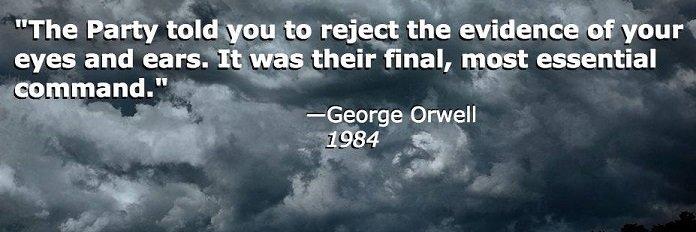Another great climate-related article from the Post discussing how water shortages and prior water mismanagement are causing conflict between First Nations, First Nations, farmers, homeowners, wildlife and wildlife refuges. (lots of snippets provided)
https://www.washingtonpost.com/nation/interactive/2021/klamath-river-basin-drought/?itid=hp_Climate box
Climate change fuels a water rights conflict built on over a century of broken promises
By Nick Kirkpatrick, Laris Karklis, James Cornsilk, Mason Trinca and Alice Li
Nov. 22, 2021
The simple way to think about this crisis: There’s no longer enough water to go around to meet the needs of farmers and Native American populations as well as fish and birds.
For more than a century, the federal government has overseen an intricate and imperfect system of water distribution intended to sustain an ecosystem and an economy. The whole precarious balance was based on the assumption that enough snow would always fall, and melt, and fill the vast watershed of the Klamath River Basin, which straddles the border of California and Oregon and is home to about 124,000 people.
But this year, the region buckled under one of the worst droughts ever recorded.
For the first time in more than a century, the region is so parched that the Bureau of Reclamation, which allocates water, has distributed none. No water for farmers, who grow alfalfa that feeds cattle in China, peppermint for tea exported to Europe, and potatoes used by Frito-Lay and In-N-Out Burger.
No water for the fish sacred to the Klamath Tribes, who revere the Lost River sucker, shortnose sucker and other species as central to their survival. No water for migratory birds, who rest and breed at two diminished wildlife refuges along the Pacific Flyway. And no water for hundreds of people who live around the Klamath Project. Their wells have run dry.
The extreme effects of climate-related drought have worsened a long-existing conflict between Native Americans and farmers and ranchers, all fighting for the resource essential to their survival.
The C’waam and Koptu fish essential to tribal culture once numbered in the tens of millions; now there are about 3,400 left in the wild, Gonyaw said. The young don’t live long enough to reproduce because of poor water quality in the Upper Klamath Lake.
Unrestricted cattle grazing upstream releases phosphorus into the lake, and as water levels fall due to irrigation, the concentration of contaminants kills the fish, Gonyaw said.
Development along the shores of the lake has also upset the balance. Without wetlands to filter out the contaminants, toxic algae thrives, ultimately suffocating the juvenile fish.
The Klamath, Yurok, Karuk, Hoopa Valley, Modoc and Yahooskin tribes all lived in the region, sustained by food in wetlands. The U.S. War Department sent surveyors John C. Fremont and Kit Carson to explore the Pacific territories for westward expansion.
The group killed Native Americans as they moved north; expedition member Thomas E. Breckenridge wrote that the men “had orders while in camp or on the move to shoot Indians on sight. While on the march the crack of a rifle and the dying yell of a native was not an unusual occurrence.”
In 1864, the federal government and the tribes signed a treaty that transferred more than 20 million acres of native land in exchange for their right to hunt, fish and live on 1.5 million acres of reservation land. The decades of subjugation were punctuated in 1954 by Congress terminating the tribes’ federal recognition and buying the reservation land, which became national forest and logging acreage.
The government had promised fishing rights and water forever to the tribes.
But it also promised irrigation water forever to the overwhelmingly White farmers of the basin, who enjoyed political support, said Hannah Gosnell, an Oregon State University geography professor. The dueling promises have been in conflict for more than a century. Over the past decade, however, the tribes have won court approval to begin enforcing the water rights first established in that original 1864 treaty.
“The tables are turning now,” Gosnell said. “The power dynamics are changing, and it’s really hard for the irrigators to come to terms with.”
Across the California line, over half of the juvenile Chinook salmon born on the Klamath River this year have died of disease. In a normal year, freshwater from the lake flows downstream and west and improves the health of the Klamath River. This year, the Bureau of Reclamation prevented that outflow of water, called a “flushing flow,” to protect the Lost River sucker and shortnose sucker in Upper Klamath Lake.
“If we don’t have the Klamath River and we don’t have healthy fish runs, it’s really hard to be a Yurok person,” said Barry McCovey, the tribe’s fishery department director. “It’s just as important to our people as the air that we breathe.”
Scott Seus is a third-generation farmer who mainly grows horseradish and peppermint. His season started late, and every day has been a struggle. “There isn’t anything easy this year,” he said. “We’re having to work for every ounce of existence.”
He’s growing only about 40 percent of his land this year, although he still needs to pay water fees to maintain the other 60 percent. The crops he has grown this year are not as large or as green. “There’ll come a point here,” he said, “where we may have to make some hard decisions that might include walking away from fields.”
Back then, “it seemed like the water supplies were endless, so it really wasn’t for several decades that anyone started to realize,” said Todd Kepple, director of the Klamath County Museum, “we may not have enough water here to keep everyone whole.”
After the 2001 drought, the federal Bureau of Reclamation withheld water from farmers to preserve the Lost River sucker and shortnose sucker protected under the Endangered Species Act. The agency based its decision on two federal biological studies that identified a minimum water level necessary for the species’s health.
Protests erupted, and Native Americans were hung in effigy, Gosnell said. During one rally, a brigade passed buckets filled with water from Upper Klamath Lake, dumping it into the main canal that feeds the project.
Eventually, farmers had enough with symbolic protests. They stormed the canal head gates and pried them open with a crowbar, releasing water into the project. U.S. Marshals were called in to contain the conflict, and the bureau eventually buckled, allotting some water to the farmers.
In August, the federal government announced $15 million in drought relief for agricultural producers in the basin. Both Gallup and Seus point out that the farmers are not the only people suffering. They mention their employees and the trickle-down effect on local businesses and charitable organizations. The water deficit goes a lot deeper than the farmers and the fish, Gallup said. “Right now, there is no winner,” he said. “Everyone’s losing.”
Also suffering are wildlife whose protected habitats rely on Klamath Project water.
The national wildlife refuges at Tule Lake and Lower Klamath are home to tens of thousands of waterfowl and are major stops for migratory birds on the Pacific Flyway. In normal years, runoff from water allocated to irrigators replenishes the refuges. This year, the refuges received no water from the project, and parts of the Tule Lake refuge were bone-dry and cracked after an emergency diversion of water.
Last year, more than 60,000 birds died of botulism in one of the worst outbreaks in years. This year, nearly all the ducks have vanished from the Lower Klamath refuge, the first migratory bird refuge established in the country. A recent aerial survey by the U.S. Fish and Wildlife Service of the vast preserve showed about 35,000 ducks this year compared with 1.5 million in 1948. The nearby Tule Lake refuge had only about 30,000 ducks in the survey, down from 3.5 million.
The water demands of the entire region are so complex that solving one deficit creates several more someplace else.
Kelsey and Nathan Steinberg woke up one morning in early July without running water — their aging well ran dry. That week, they said, three of their neighbors experienced the same. Officials received hundreds of calls about wells gone dry between July and October. Recent powerful rainstorms in the West have barely made a dent, officials said.
As is in nature, everything is interconnected.
“Without a restored ecosystem, nobody gets anything,” Gosnell said. “Nobody wins.” But, she said, restoration is only part of the solution. The physical challenges can’t be overcome without addressing the human ones.
Part of that, Gosnell said, is returning land to the tribes.
The recent $1.2 trillion infrastructure bill provides $160 million for Fish and Wildlife to fund efforts over five years to protect and restore the habitats of the Lost River sucker and shortnose sucker as well as salmon in the Klamath River. While relief and restoration efforts have long punctuated the Klamath conflict, no single investment of this scale has been made before.





